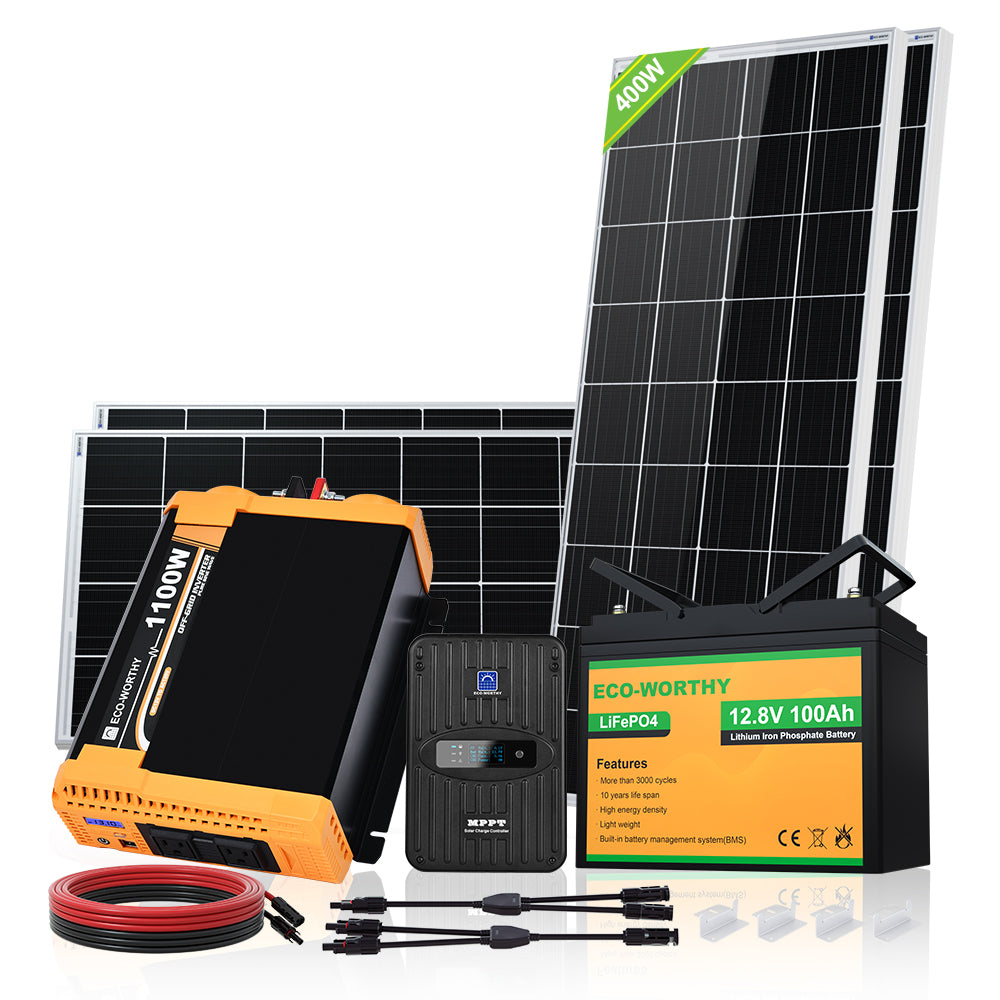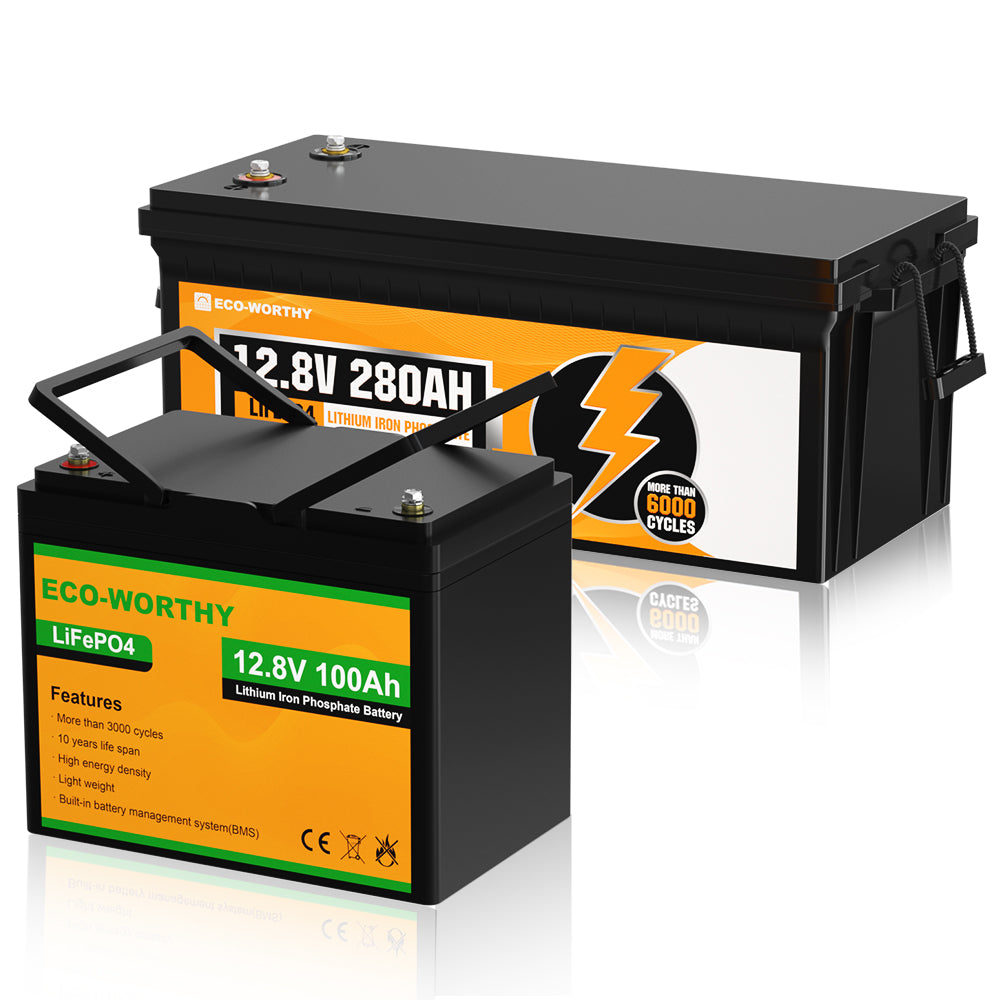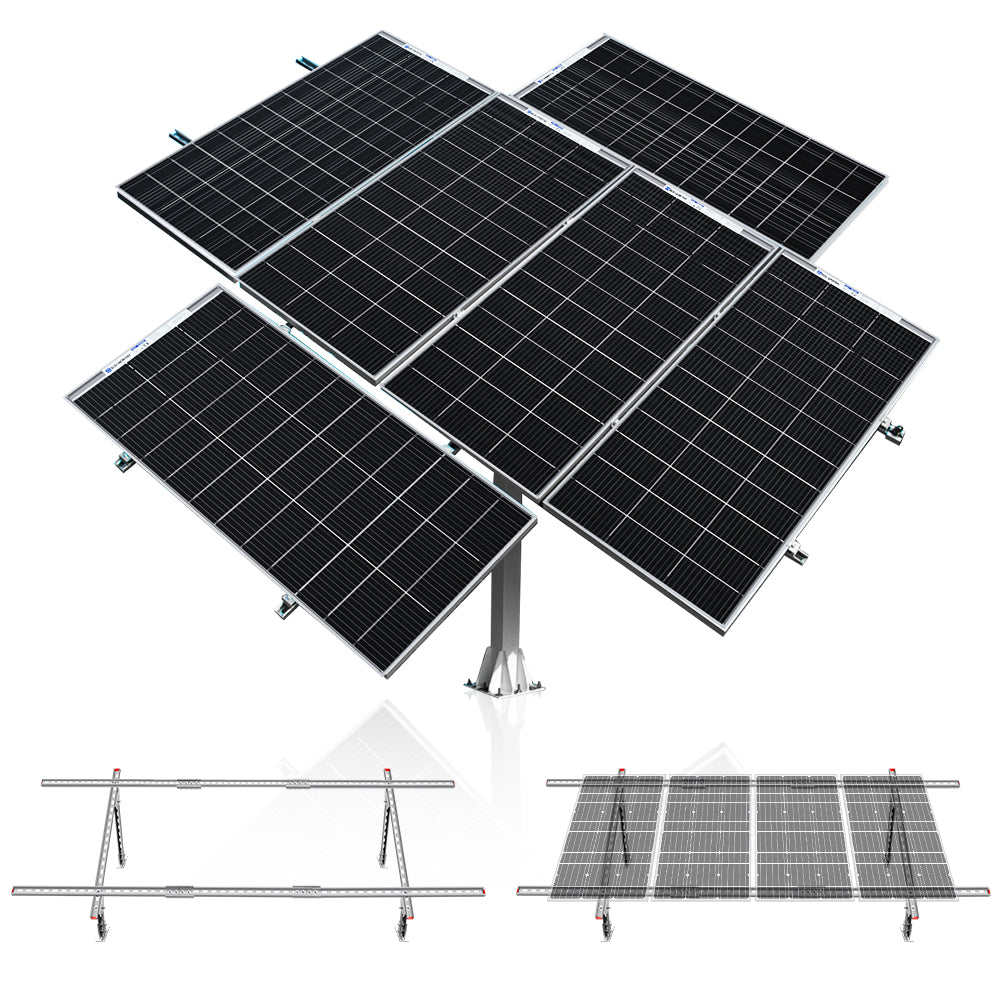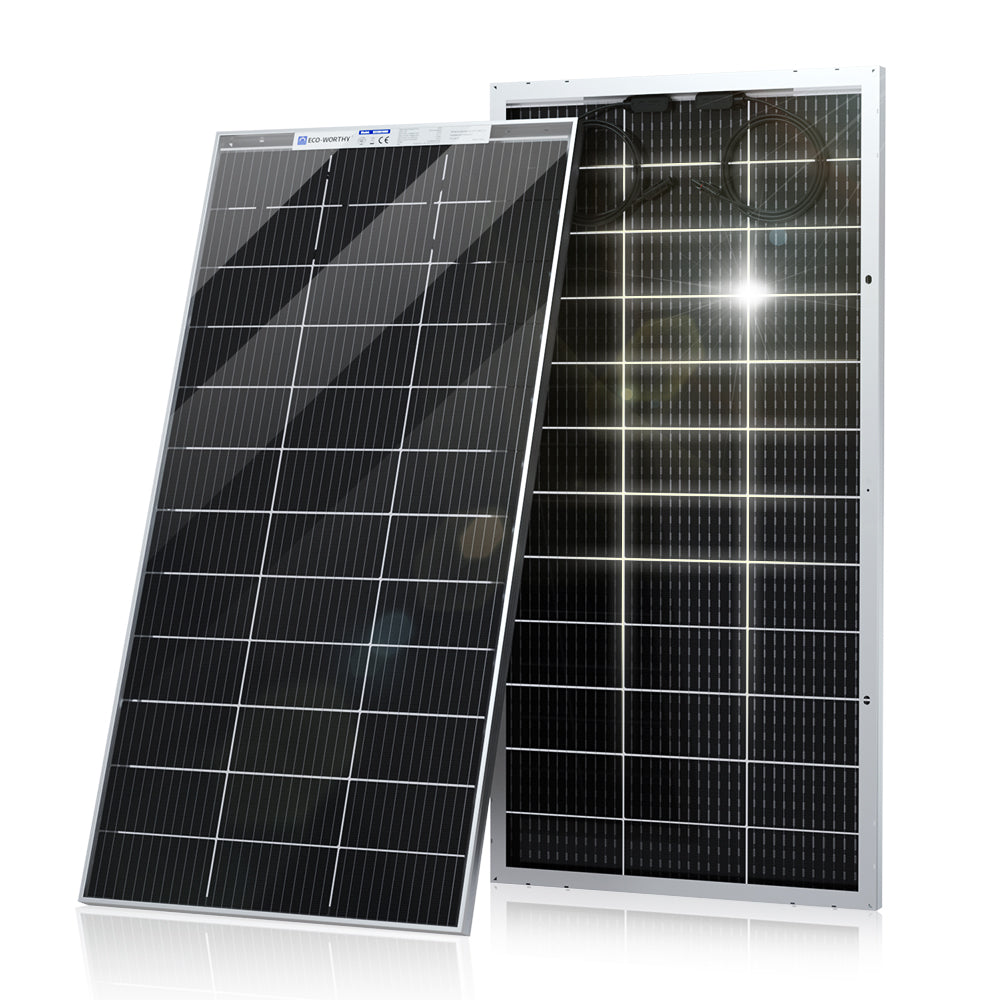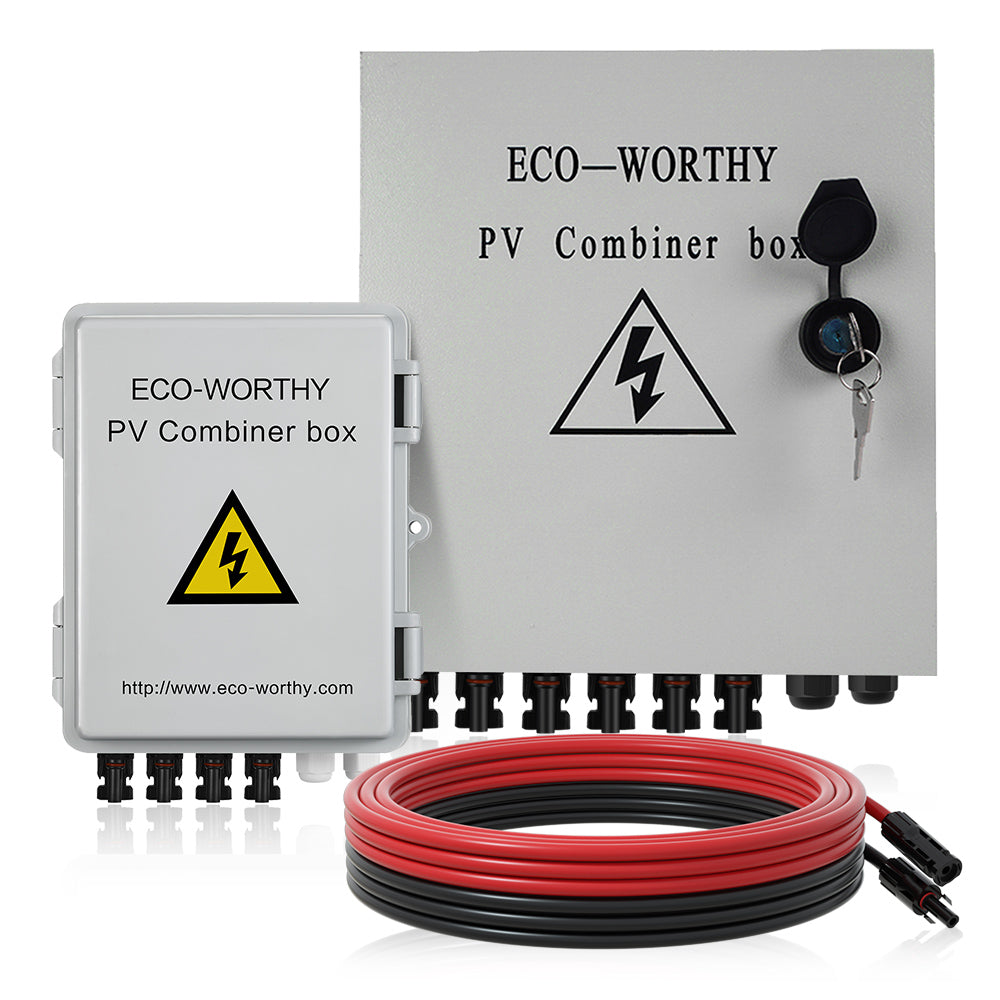
One of the most common questions we get is: “How much solar power do I need?” The answer is pretty complex, and frankly, most people approach it from the wrong angle when they start to look into solar.
If you want to run through calculations yourself to determine the size of the solar power system you should get for your specific circumstances, you’ll want to figure out the main constraints on the project and use those restrictions as the starting point for the design. You can approach the project from two angles:
1) How much money you’re prepared to spend.
2) How much electricity your household uses.
Take into consideration other sizing factors and common stumbling blocks that may impact how to size a solar system:
1) Local levels of sun exposure
2) Orientation of the array (tilt angle)
3) Plans for future expansion
Before you begin to size a solar system, follow these steps to determine your home’s average electricity consumption and PV needs:
1. Calculate Your kWh Usage
1) Gather the kilowatt-hours (kWh) usage from your electric bill. We will assume it is quarterly. Look at how many kWh’s you have used in the previous 4 quarters. The information will be on your bill–look for usage over time and add up the last 4 quarters. That is how many kWh’s of electricity you use per year. Let’s imagine you use 6250 kWh per year.
2) Figure your daily kWh usage. Divide your [annual kWh’s] by 365. That is your daily usage. In this example it comes out as 17kWh’s per day.
2. Look Up Your Peak Sun Hours
Average peak sun hours vary greatly depending on your location and local climate. You’ll want to determine how may peak hours of sunlight you’ll get so you can make the most of the solar power:
1) Look up your peak sun hours, through the sun hours chart below to determine the number of hours per day the sun produces peak sunlight.
2) Find the nearest city to you and write down the daily average of peak sun hours.

3. Calculate the Watts of Your Solar System
To figure out how much solar panel you need, take your daily kWh energy requirement and divide it by your peak sun hours to get the kW output. Then divide the kW output by your panel’s efficiency to get the estimated number of solar panels you’ll need for your system.
(Daily kWh ÷ average sun hours) x 1.15 efficiency factor = DC solar system size
For example, if you live in Florida, you average 4.5 peak sunlight hours per day and you need 17kWh DC per day.
(17 kWh ÷ 4.5 sun hours) x 1.15 efficiency factor = 4.3 kW DC solar system size required
Using the example above with a 4.3 kW DC system, you can multiply this number by 1,000 to confirm that you need how many watts of solar system.
4.3 kWh x 1000 (convert to watts) = 4300 watts solar panel required
ECO-WORTHY offers high performing solar panel kits and dependable customer service. Here are a few viable options to consider after you size a solar system.
ECO-WORTHY Off Grid Solar Kits
Of course, if all this talk of calculation is totally confusing you, then we suggest that you can contact us using email or LiveChat. This will allow you to talk directly to an expert who can explain all the ins and outs of system sizing with you and recommend how big a solar power system and how many solar panels you’ll need based on your requirements and circumstances.
Appliance Consumption Table
|
Appliance |
Watts |
Appliance |
Watts |
Appliance |
Watts |
|
Kitchen |
|
Living Room |
|
Tools |
|
|
Blender |
500 |
Bluray Player |
15 |
Band Saw – 14″ |
1100 |
|
Can Opener |
150 |
Cable Box |
35 |
Belt Sander – 3″ |
1000 |
|
Coffee Machine |
1000 |
DVD Player |
15 |
Chain Saw – 12″ |
1100 |
|
Dishwasher |
1200-1500 |
TV – LCD |
150 |
Circular Saw – 7-1/4″ |
900 |
|
Espresso Machine |
800 |
TV – Plasma |
200 |
Circular Saw 8-1/4″ |
1400 |
|
Freezer – Upright – 15 cu. ft. |
1240 Wh/Day** |
Satellite Dish |
25 |
Disc Sander – 9″ |
1200 |
|
Freezer – Chest – 15 cu. ft. |
1080 Wh/Day** |
Stereo Receiver |
450 |
Drill – 1/4″ |
250 |
|
Fridge – 20 cu. ft. (AC) |
1411 Wh/day** |
Video Game Console |
150 |
Drill – 1/2″ |
750 |
|
Fridge -16 cu. ft. (AC) |
1200 Wh/day** |
Lights |
Drill – 1″ |
1000 |
|
|
Garbage Disposal |
450 |
CFL Bulb – 40 Watt Equivalent |
11 |
Hedge Trimmer |
450 |
|
Kettle – Electric |
1200 |
CFL Bulb – 60 Watt Equivalent |
18 |
Weed Eater |
500 |
|
Microwave |
1000 |
CFL Bulb – 75 Watt Equivalent |
20 |
Misc. |
|
|
Oven – Electric |
1200 |
CFL Bulb – 100 Watt Equivalent |
30 |
Clock Radio |
7 |
|
Toaster |
850 |
Compact Fluorescent 20 Watt |
22 |
Curling Iron |
150 |
|
Toaster Oven |
1200 |
Compact Fluorescent 25 Watt |
28 |
Dehumidifier |
280 |
|
Stand Mixer |
300 |
Halogen – 40 Watt |
40 |
Electric Shaver |
15 |
|
Heating/Cooling |
|
Incandescent 50 Watt |
50 |
Electric Blanket |
200 |
|
Box Fan |
200 |
Incandescent 100 Watt |
100 |
Hair Dryer |
1500 |
|
Ceiling Fan |
120 |
LED Bulb – 40 Watt Equivalent |
10 |
Humidifier |
200 |
|
Central Air Conditioner – 24,000 BTU NA |
3800 |
LED Bulb – 60 Watt Equivalent |
13 |
Radiotelephone – Receive |
5 |
|
Central Air Conditioner – 10,000 BTU NA |
3250 |
LED Bulb – 75 watt equivalent |
18 |
Radiotelephone – Transmit |
75 |
|
Furnace Fan Blower |
800 |
LED Bulb – 100 Watt Equivalent |
23 |
Sewing Machine |
100 |
|
Space Heater NA |
1500 |
Office |
|
Vacuum |
1000 |
|
Tankless Water Heater – Electric |
18000 |
Desktop Computer (Standard) |
200 |
Note: TVs, Computers, and other devices left plugged in but not turned on still draw power. **To estimate the number of hours that a refrigerator actually operates at its maximum wattage, divide the total time the refrigerator is plugged in by three. Refrigerators, although turned “on” all the time, actually cycle on and off as needed to maintain interior temperatures. |
|
|
Water Heater – Electric |
4500 |
Desktop Computer (Gaming) |
500 |
||
|
Window Air Conditioner 10,000 BTU NA |
900 |
Laptop |
100 |
||
|
Window Air Conditioner 12,000 BTU NA |
3250 |
LCD Monitor |
100 |
||
|
Well Pump – 1/3 1HP |
750 |
Modem |
7 |
||
|
Laundry |
|
Paper Shredder |
150 |
||
|
Clothes Dryer – Electric |
3000 |
Printer |
100 |
||
|
Clothes Dryer – Gas |
1800 |
Router |
7 |
||
|
Clothes Washer |
800 |
Smart Phone – Recharge |
6 |
||
|
Iron |
1200 |
Tablet – Recharge |
8 |
||

